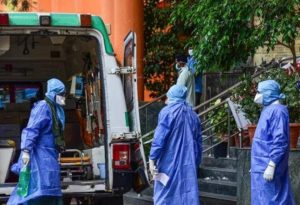
More than 300 fresh cases of Covid-19 were recorded in India on Tuesday. This was yet another sharp spike in the number of novel coronavirus cases in the country; in fact, it was the sharpest daily spike yet. You can confirm this trend here.
The numbers show that the rate of confirmed Covid-19 cases has accelerated since the nationwide lockdown was announced on March 24. The total number of cases on the day the lockdown was announced was 519. By the end of March 31, the number had almost tripled to 1,649. This, however, does not mean that lockdown is a failure. It indicates that without lockdown, the coronavirus outbreak would have been much worse as all the current confirmed cases point to pre-lockdown infections.
At a total of 1,649, India has recorded 740 of Covid-19 cases in the last three days (since March 28). This accounts for almost 45 per cent of the total cases recorded in the country since January 30.
The government has blamed a lack of support from people for the continued spike in the number of cases of novel coronavirus infections. These cases are largely concentrated around what are called hotspots. The government has identified 10 such hotspots across the country.
These are Nizammudin and Dilshad Garden in Delhi, Noida and Meerut in Uttar Pradesh, Bhilwara in Rajasthan, Ahmedabad in Gujarat, Kasaragod and Pathanamthitta in Kerala and, Mumbai and Pune in Maharashtra.
For those not conversant with epidemic terminology, a disease cluster is a localised area where 10 or more cases of an infection have been found. If several clusters develop in any particular region, it, clubbed with its neighbouring areas, is called a hotspot.Delhi has two major hotspots – Nizamuddin, a locality with rich heritage of medieval times, and Dilshad Garden, another centuries-old habitation of the city. The biggest of the hotspots is Nizamuddin, courtesy a religious congregation of Tabligh Jamaat between March 1 and 15. Delhi was already in partial lockdown by then. Some 3,200 devotees from parts of India and abroad participated in the congregation. Many stayed till March 22.
The full scale of infections sourced from Nizamuddin is yet to be ascertained but it already has become the single-largest source of Covid-19 cases in Delhi, Tamil Nadu, Telangana, Jammu and Kashmir, and Andaman and Nicobar Islands. The trail is still being followed.
Tabligh Jamaat has come under sharp criticism with people questioning its decision to hold a big congregation despite having known that a similar congregation of the organisation in Malaysia had been the single-largest source of Covid-19 cases in that country. The blame-game has become murkier with some trying to give it a communal angle.
Delhi Deputy Chief Minister Manish Sisodia on Wednesday tweeted an update saying an evacuation operation was undertaken at the Tabligh Jamaat premises in Nizamuddin. It took 36 hours to evacuate 2,361 people from the premises, Sisodia said.
Leave a Reply